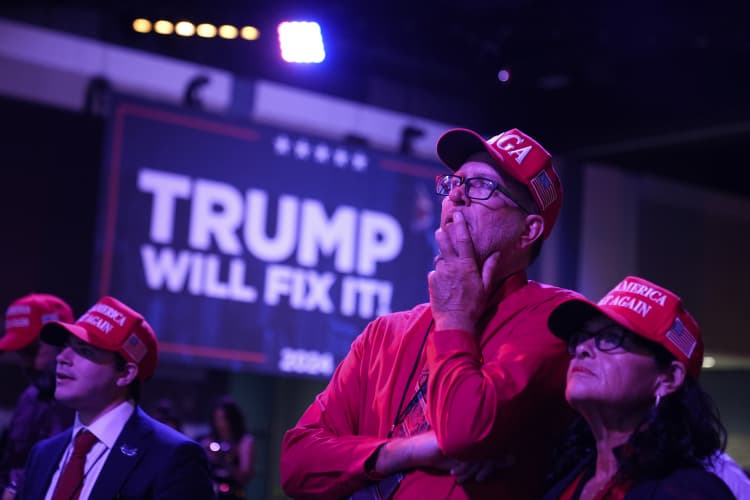Why Do Trump Approval Polls Vary So Widely?
On Sept. 30, Trump hit the lowest approval of his second term so far, at -8.2 net approval, with 53% disapproving and 44.8% approving. However, diving into the specific polls in the Trump Approval RealClearPolitics Average, specific polling results range from Trump at +6 to -18 net approval, a nigh statistical impossibility if they were conducted with similar polling methods.
Polls measuring the presidential election last year, on the other hand, had a much smaller range, only from Harris +4 to Trump +3, a 7-point swing. This stark difference in the range of polling begs the question: Why do approval polls vary so much more than election polls?
One obvious difference between the two types of polls is the people being interviewed. All polls in the final RCP Average before the 2024 election were conducted with likely voters, meaning pollsters targeted individuals they believed were likely to vote. The latest Trump job approval polls include other types, such as surveys of U.S. adults, registered voters, and likely voters. The fact that some polls are of registered or likely voters, while others cast the broader net of all U.S. adults, can add variability to the results.
The real inside baseball of the polling world, the factor that explains most of the variation in results, is the polling sample. For election polling, pollsters try to approximate the group of people they believe will vote in that election. For example, if a young candidate is running and the pollster believes young voters will turn out in higher numbers than usual, they might include a larger share of younger people in the polling sample.
This naturally adds variance to polls, as all pollsters construct their sample differently. Since not all pollsters disclose their sampling details, it can be challenging to assess accuracy. For election polling, this isn’t a significant problem because pollsters have an incentive to be as accurate as possible, so their polls are viewed as more accurate in future elections.
However, with approval polling, that incentive doesn’t exist as there’s no judgment day to say whether your poll was accurate or not. Instead, there’s an incentive to produce results outside the norm that draw attention, whether through criticism or praise.
This causes a consistently much wider range in approval polling. In the final National Trump vs. Harris RCP Average before the 2024 election, all polls were within four points of the final average. In the current RCP Average for Trump Approval, only seven of 13 polls are within four points of the average. The others vary much more widely, including one from InsiderAdvantage showing Trump at +6 approval and another from Pew at -18 net approval, while the Average has him at -7.2.
This doesn’t mean either InsiderAdvantage or Pew Research is necessarily wrong, and the polls in the middle are necessarily right. There have been a number of instances in recent history, pollsters who differed from the consensus have turned out to be correct, most notably in the 2016 presidential election, where the few pollsters who had Trump ahead of Clinton were accurate.
There’s also an incentive in election polling for pollsters to cluster around one another’s results because even if they’re wrong, they won’t stand out as being especially wrong compared with their peers. That incentive doesn’t exist in approval polling, since there’s no ultimate judgment about who was right or wrong.
Ultimately, the widening spread in Trump’s approval numbers underscores how polling reliability isn’t an exact science and, like all industries, is influenced by incentives. Election-year surveys, driven by the need for accuracy, tend to converge on a narrower range of results. Approval polls, however, lack that external check, creating room for sensational outliers that capture attention.
State of Union
.

